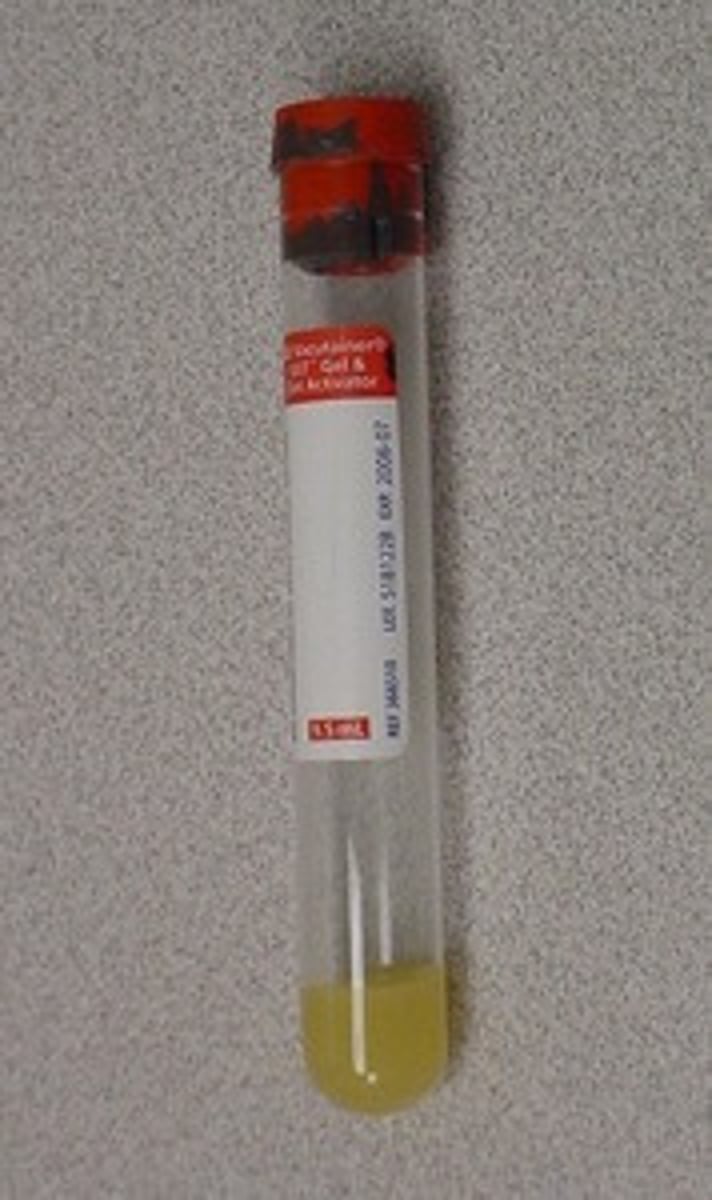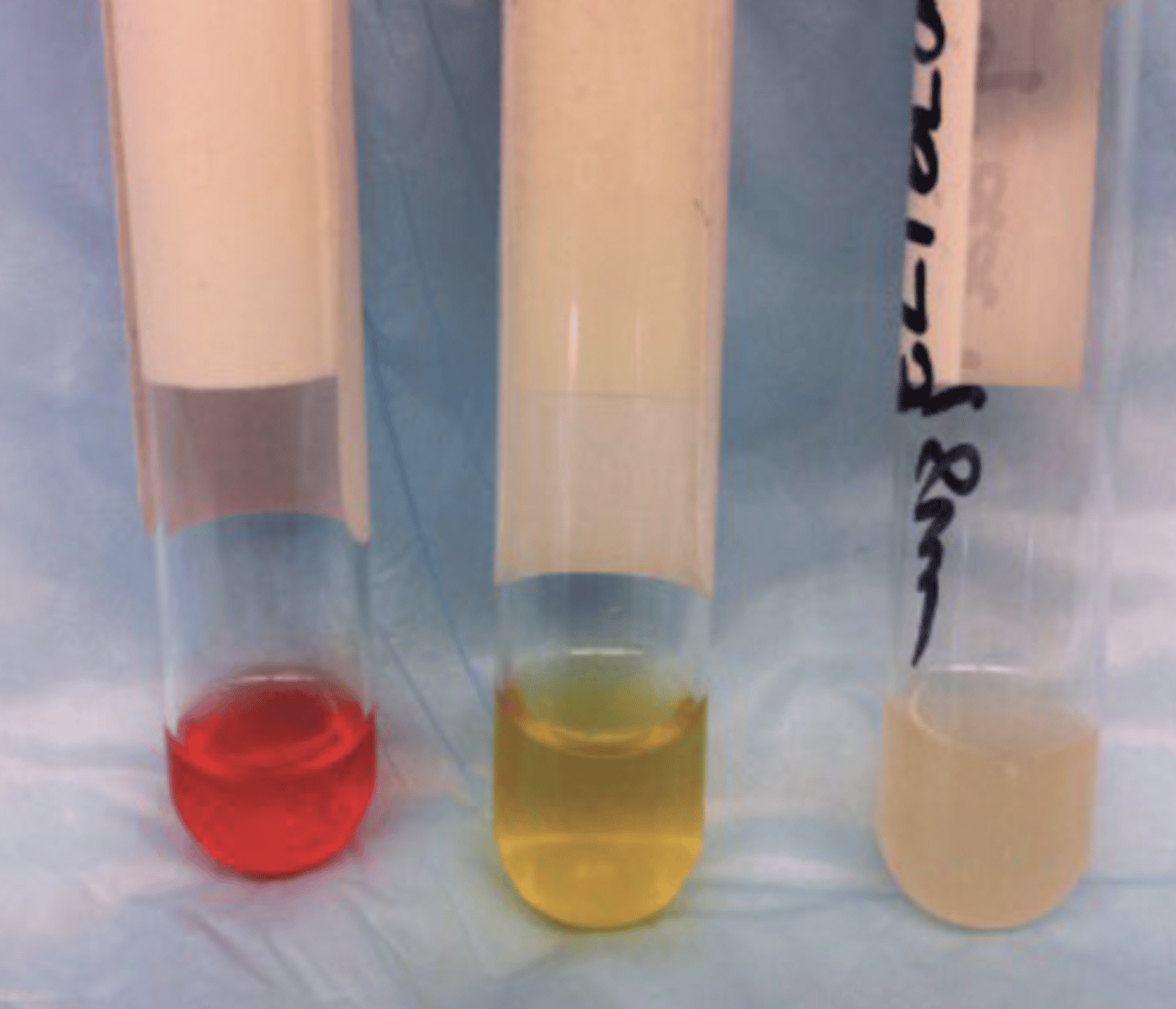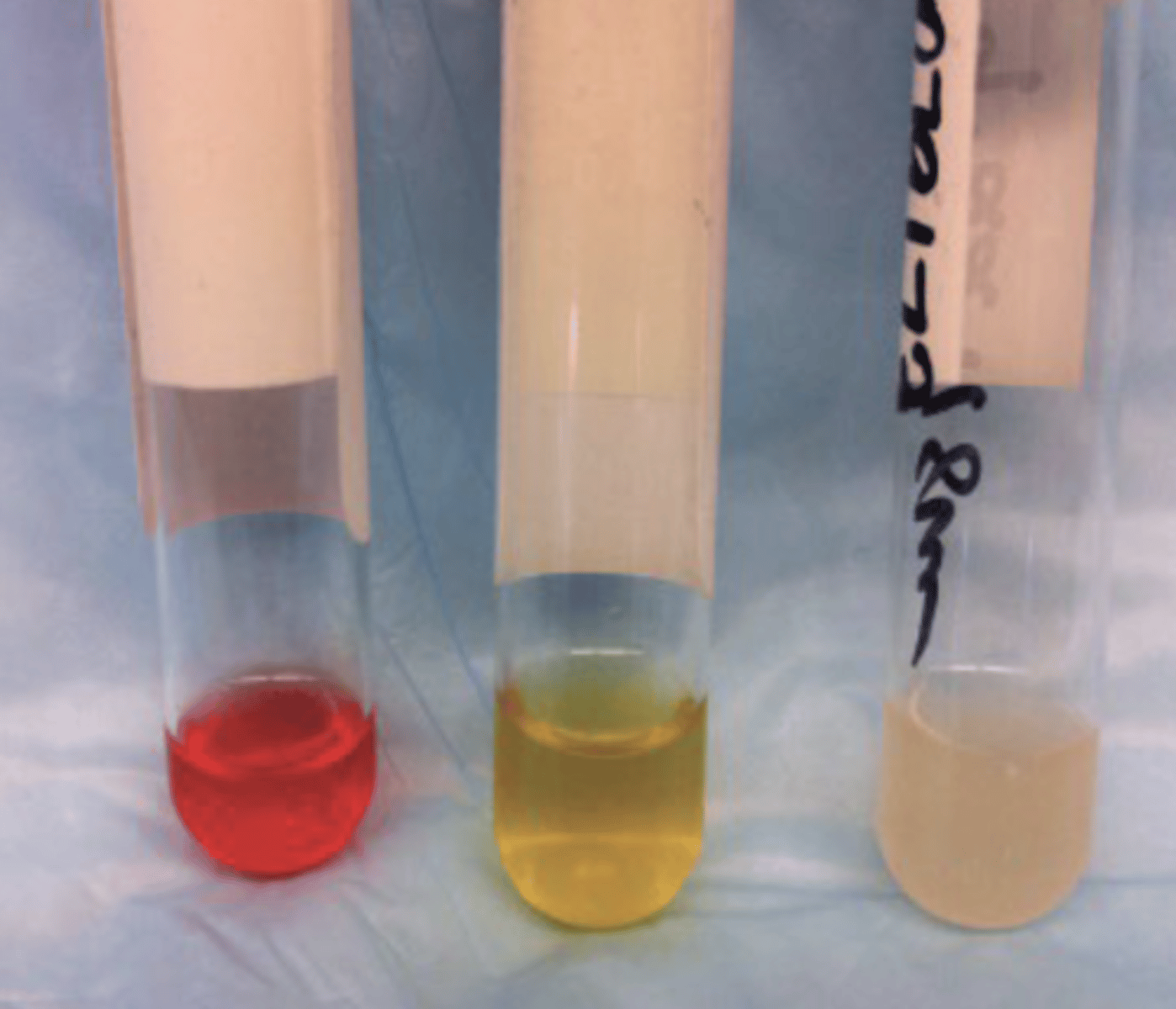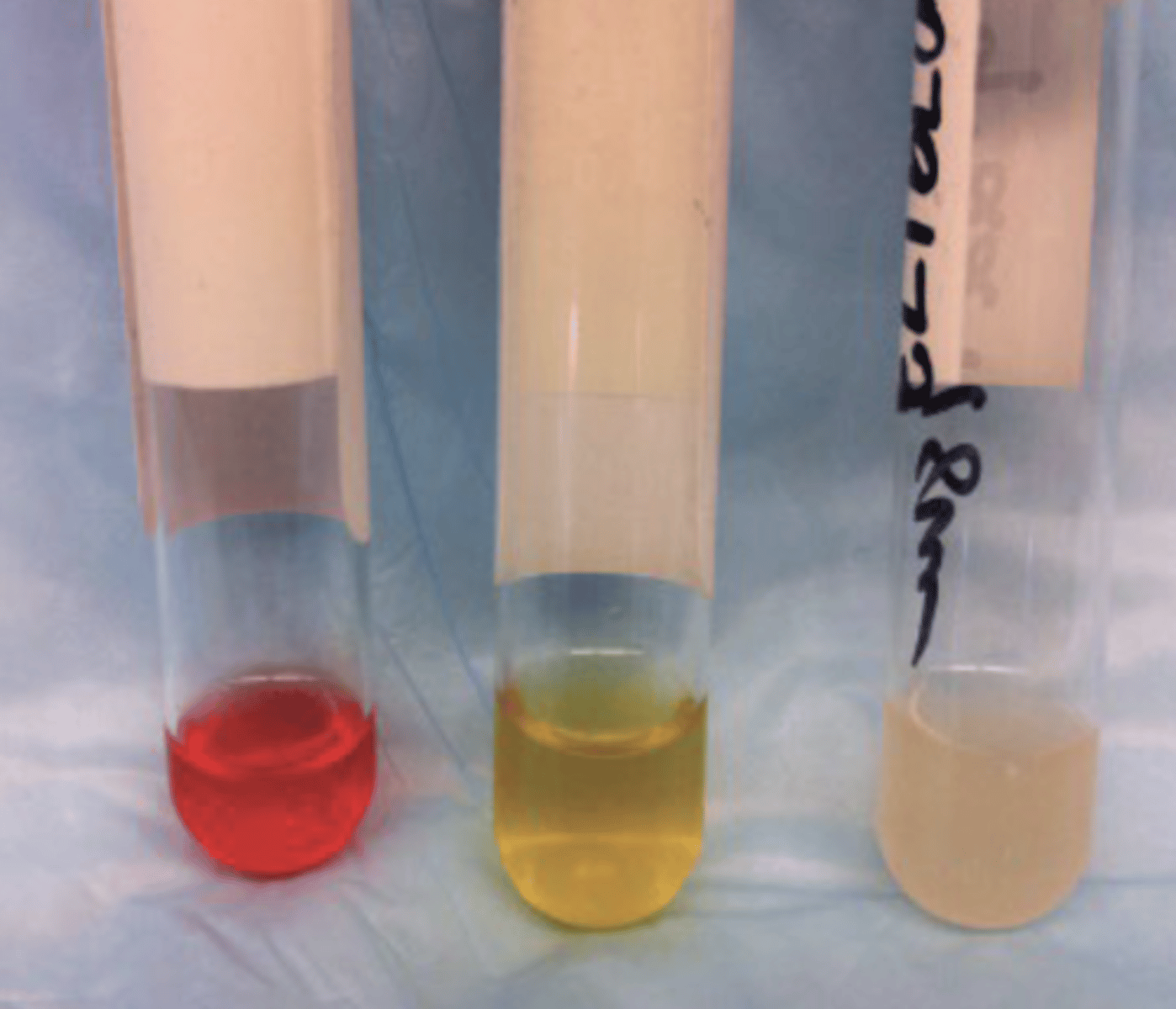1 proper sample storage/submission
1/23
There's no tags or description
Looks like no tags are added yet.
Name | Mastery | Learn | Test | Matching | Spaced |
|---|
No study sessions yet.
24 Terms
Plasma: obtained from anticoagulated sample (RBC at bottom, then buffy coat, then plasma) = has fibrinogen in it.
Serum: obtained from clotted sample (clot at bottom, then serum) = LOSS of clotting factors like fibrinogen.
What is the difference between serum and plasma? Which is obtained from a coagulated sample? What are the components of each?
Avoid EDTA contamination
Why is it important to fill purple top tubes last?
May introduce hemolysis or artificially reduce platelet counts
Why is it important to avoid traumatic venipuncture when taking a blood sample?
As soon as possible. Samples have the ability to coagulate soon after
When should you transfer blood samples into tubes? Why?
Excess pressure introduces hemolysis
Why should you allow blood samples to fill tubes from vacuum pressure instead of plunging the syringe?
CBC
What types of blood samples should NOT be centrifuged or frozen?
FALSE: excess heat can cause erroneous values, instead these samples should be refrigerated or sent on ice
TRUE OR FALSE: If you cannot immediately process a plasma or serum sample, it is okay to place it in a warm bath to keep it viable.
Purple, Green, Blue
What are the 3 types of anticoagulation tubes (color)?
EDTA. Does whole blood (CBC)
What does the anticoagulation purple top tube contain? What type of blood sample is it often used for?
Heparin. Does plasma biochemistry
What does the anticoagulation green top tube contain? What type of blood sample is it often used for?
Citrate. Does clotting profile and coagulation testing (often before surgery)
What does the anticoagulation blue top tube contain? What type of blood sample is it often used for?
c. blue
It is most important to observe the fill line in which tube?
a. green
b. purple
c. blue
Serum biochemistry. It is a sterile, non-additive tube
What does the red color tube top do? What is in it?
Tiger top (red, red/grey)
What color is the "serum separator tube"?
Contains gel with density between cells and serum/plasma. Gel also activates clot, making blood clot faster. Serum will remain on top for collection.
What is the purpose of the tiger top tubes?

Allow to clot for 60 mins, centrifuge before 2 hours
How long should you let tiger top tubes clot for? How long after should you centrifuge?
Hemolysis, lipemia, icterus
What are the 3 common types of plasma/serum appearance changes?
Hemolysis: free hemoglobin --> red discoloration
Lipemia: high fats in blood (this is why animals fast) --> latescent appearance
Icterus: elevated bilirubin --> yellow discoloration
Why do plasma/serum samples become discolored? Include reasoning for hemolysis, lipemia, and icterus.
CBC: falsely decreases PCV, HCT, and RBC (because rbc are broken, and because there are less in tact rbc, the count looks lower than it is), ghost RBCs, MCHC falsely increase (because excess Hb in bloodstream registers as if it is in th RBCs)
Chemistry: increase in intra-RBC compounds (like potassium)
What impact could hemolysis have on plasma or serum appearance, recognizable in a CBC? Chemistry panel?
CBC: falsely increase hemoglobin and in turn MCHC. Large lipids could be counted as platelets
Chemistry: spectrophotometric interference, dec. in Na/Cl
What impact could lipemia of plasma or serum have on CBC? Chemistry panel?
Hemolysis
What is the problem in the serum sample on the left?

Lipemia
What is the problem with the serum on the right?

Icterus
What is the problem with the serum sample in the middle?

CBC: little to no effect
Chemistry: falsely decreases biuret total protein and creatinine
What impact could icterus of plasma or serum have on CBC? Chemistry panel?